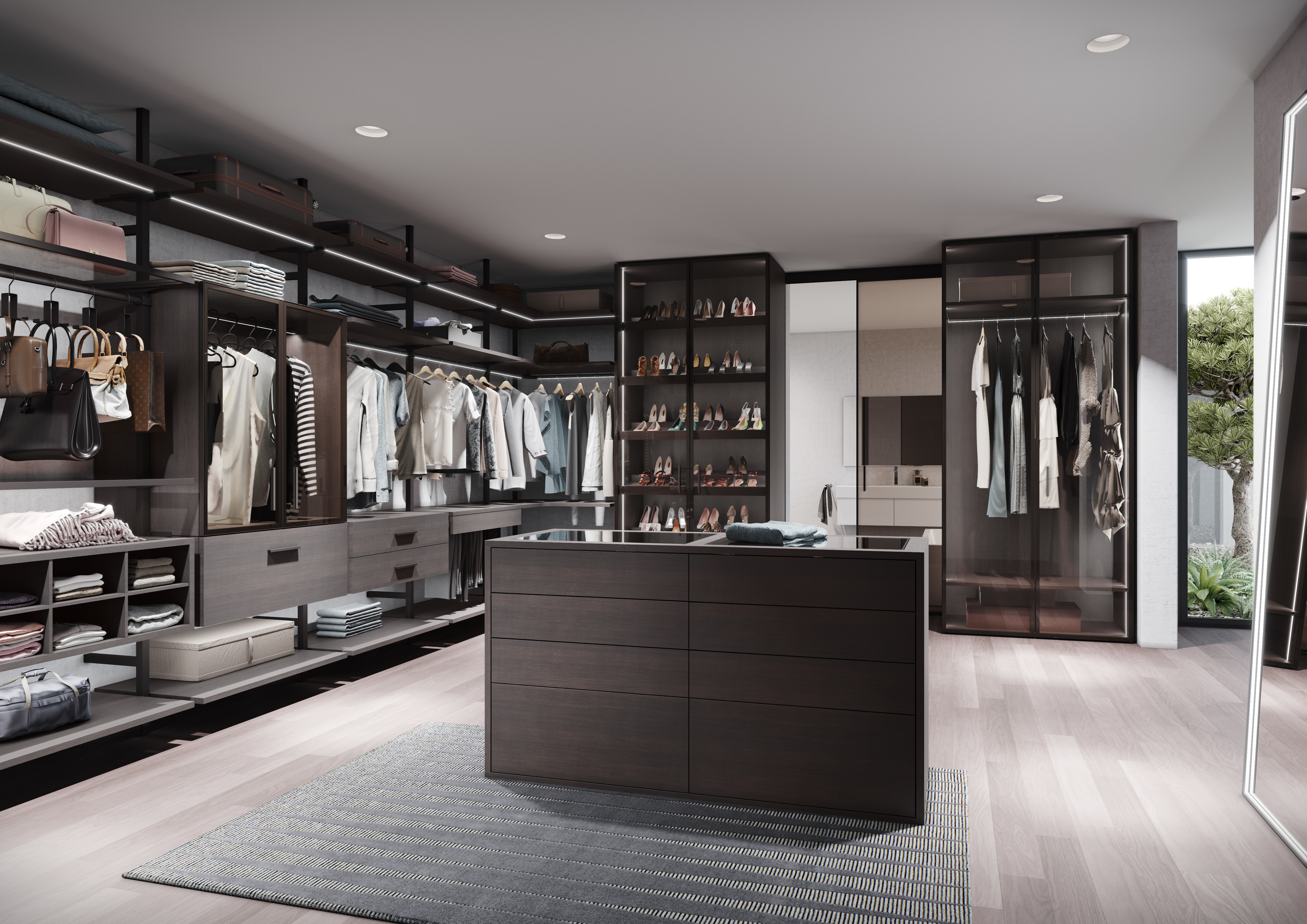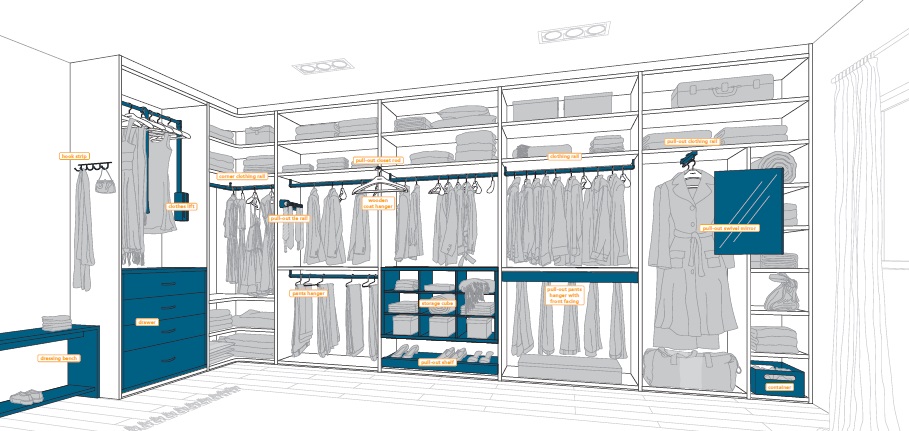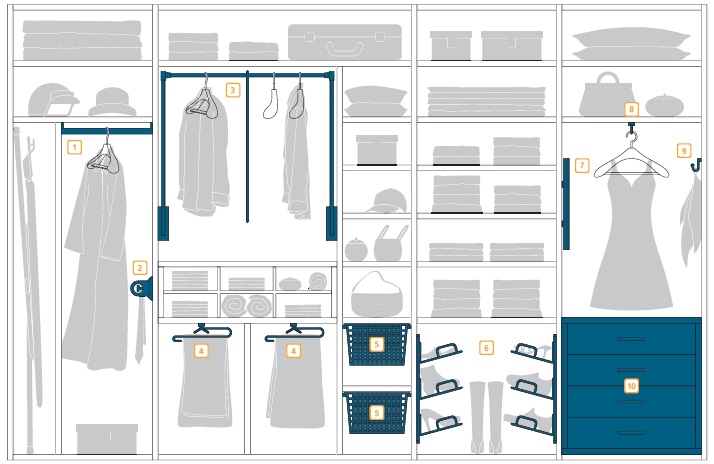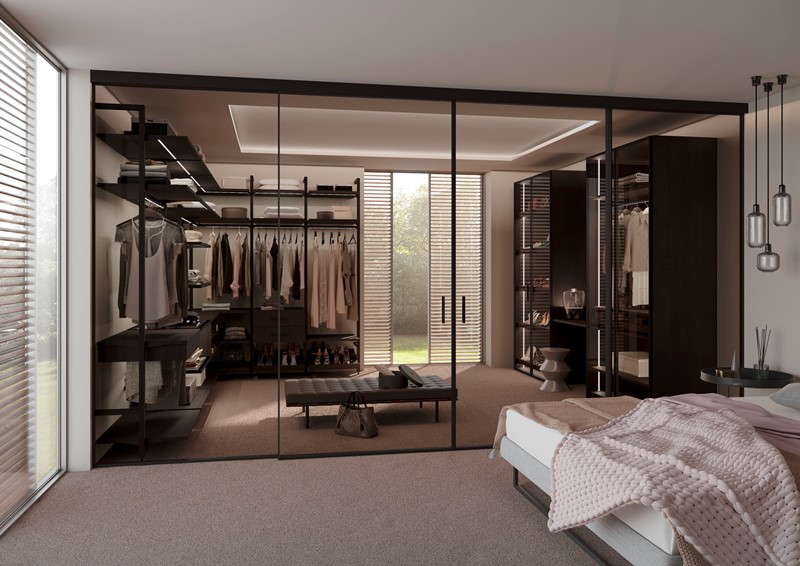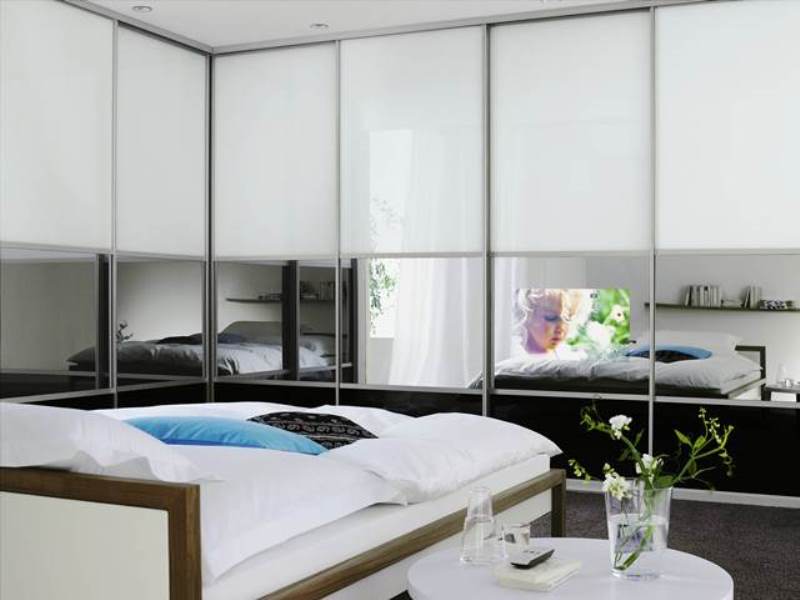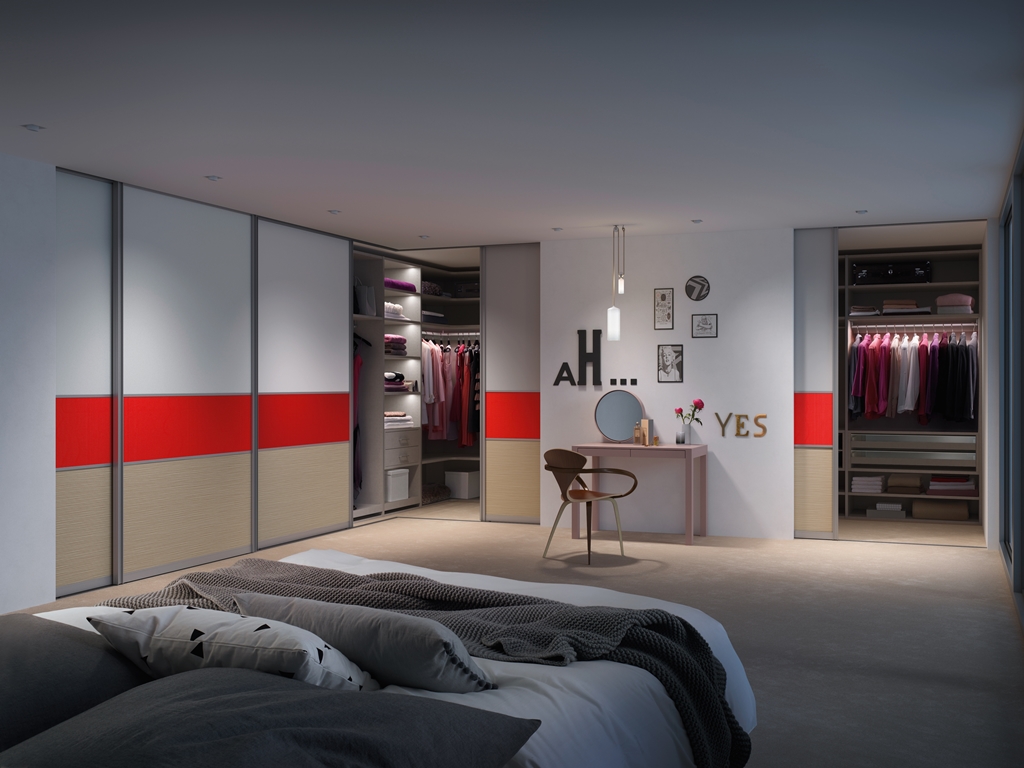How To Plan Your Walk-in Wardrobe
Need help planning your walk-in closet design? Use this handy guide!
1. What are the general guidelines in planning a walk-in wardrobe?
Firstly, homeowners need to ask themselves which are the possible spaces within the home to position the walk-in wardrobe? Should it be within the master bedroom or should one of the smaller bedrooms be converted into a walk-in wardrobe?
After doing space planning for the entire house and shortlisting the possible spaces for the walk-in wardrobe, homeowners need to look at their existing closet to find out what are the clothing items to be stored in the new wardrobe. A personal inventory list detailing the items of clothing homeowners need to store can help estimate the dimensions of the space(s) required for different groups of clothing items. Based on the dimensions required, homeowners can determine which wardrobe space shortlisted is most suitable.
Next, homeowners need to narrow down to the content of the wardrobe. Based on the different groups of clothing items listed in the inventory list, homeowners need to ask themselves if they can maintain the good habit of putting clothing and accessories back to the planned segments within the wardrobe after use or wash. If they feel that it will be a challenge to do so due to their busy lifestyle, it may be prudent to include wardrobes accessories to aid the organisation process.
Lastly, if homeowners feel that there is still a need to hide the mess or prefer some privacy for their dressing room, sliding doors that do not need extra clearance space for opening can be added.
2. What are the most efficient layouts for a walk-in wardrobe?
With good space planning, wardrobes should always be custom-made for individual room situations. A custom-made wardrobe fits perfectly into every space and every niche, taking advantage of all the given space in order to provide homeowners with the maximum storage available.
Depending on the layout of the bedroom, homeowners could consider the following layouts. These layouts create a room-in-a-room, perfect for situations where only a part of the room can be used.
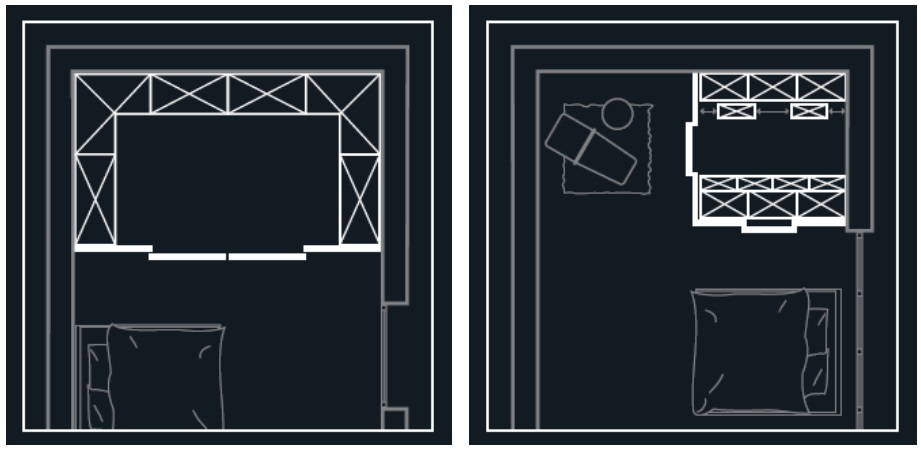
Left: Walk-in Closet | Right: Room Cube
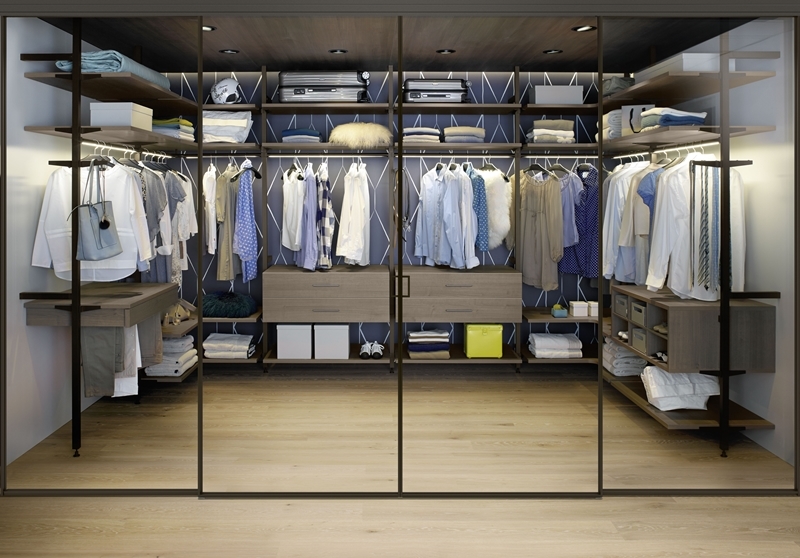
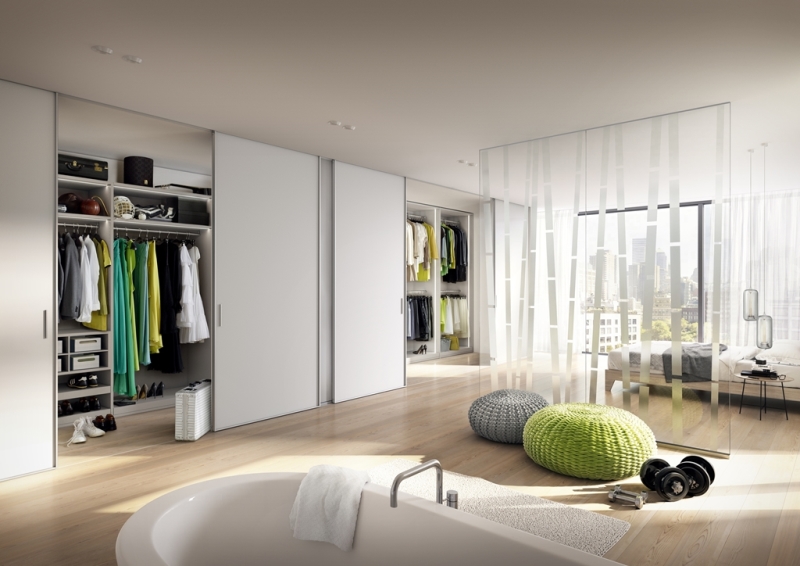
In order to make the room look more spacious, clear tempered glass is usually recommended as the infill for the sliding doors.
Another layout option for walk-in wardrobe is L-shaped wardrobe.
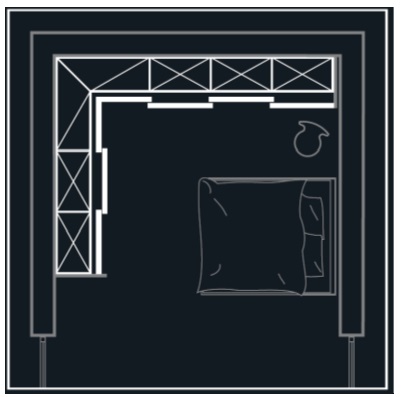
Corners are always good storage areas that are often otherwise wasted by bad space-planning. A corner solution or L-shaped wardrobe helps to make full use of neglected but precious real estate space in hard-to-reach corners.
3. Do recommend some wardrobe accessories/add-ons to maximise storage space. What are some simple organisation tips that could minimise mess in the wardrobe?
In order to keep the wardrobe interior organised, clothes that the homeowners wear everyday should be easily accessible. Additionally, when clothing items are not well-sorted or organised, it will result in chaos while searching for one particular clothing item. Wardrobe accessories such as pull-downs, pull-out wire baskets and racks can be added to improve the organisation and accessibility of clothing items and accessories. Customised dividers for the drawer elements can also help with the organisation of socks, lingerie and more
Pull-down clothes lift – ideal for hanging up items of clothing in higher areas.
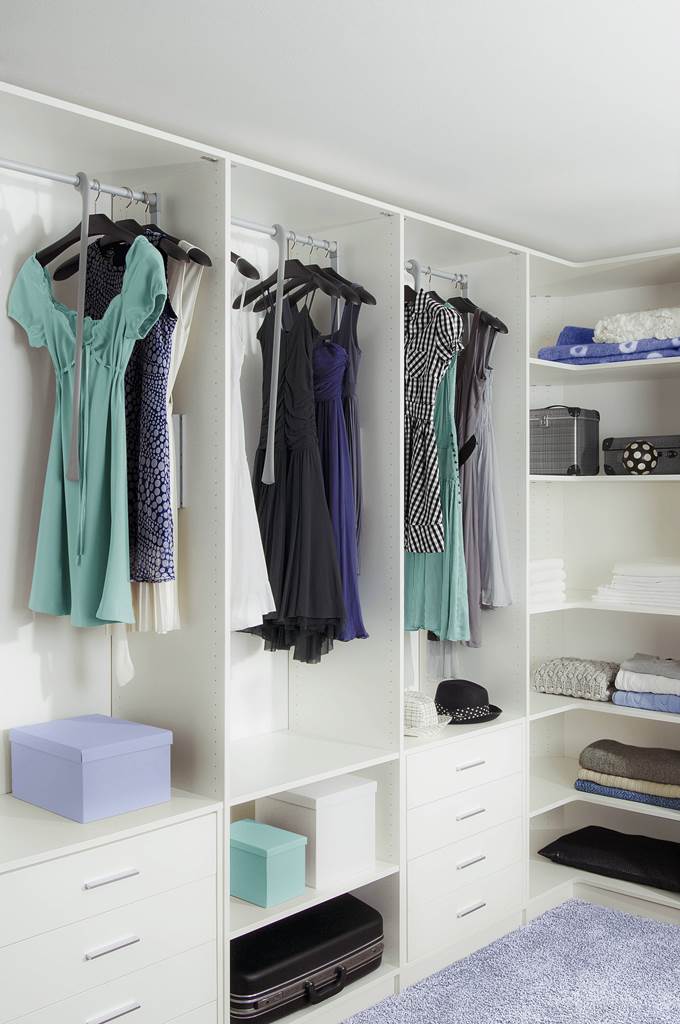
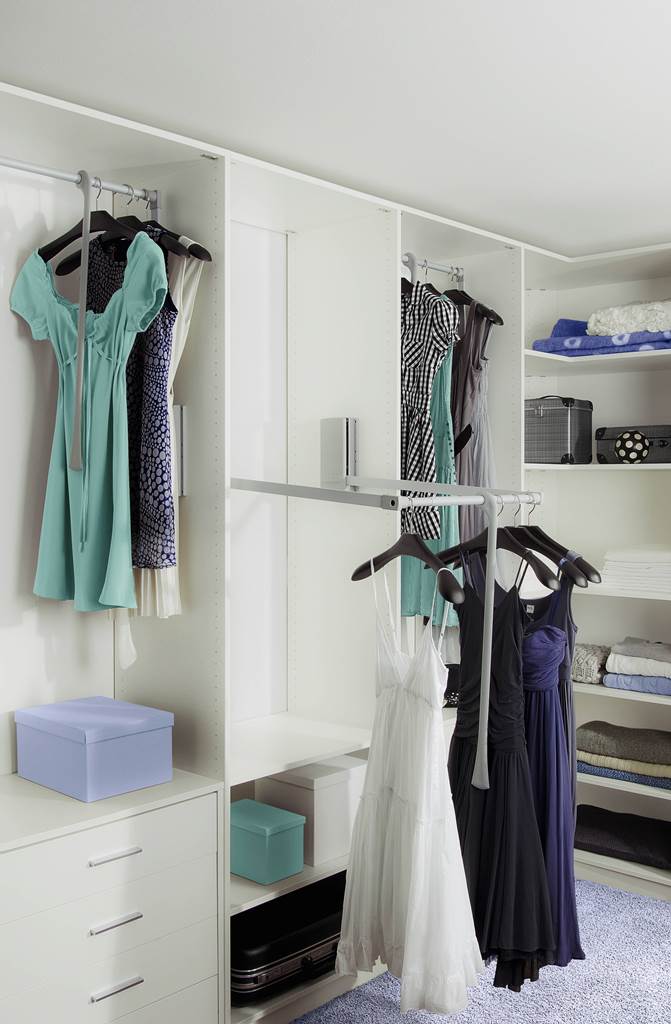
Pull-out pants hanger – practical and attractive way to hang and organise pants.
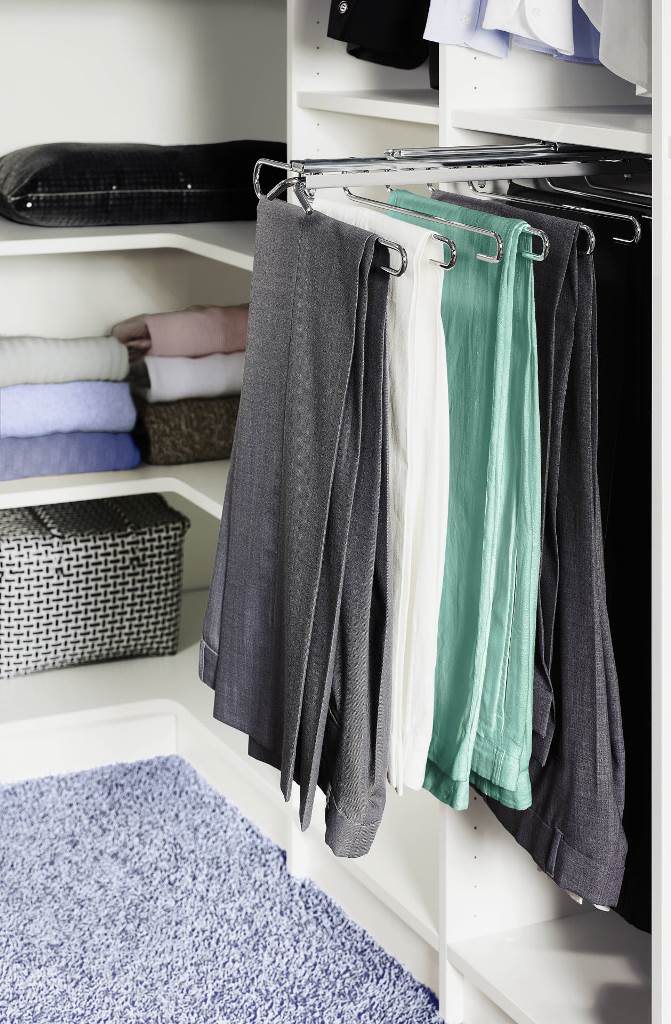
Dividers within drawers can help organise everyday items such as ties, belts, jewellery, watches, socks, scarves and more.
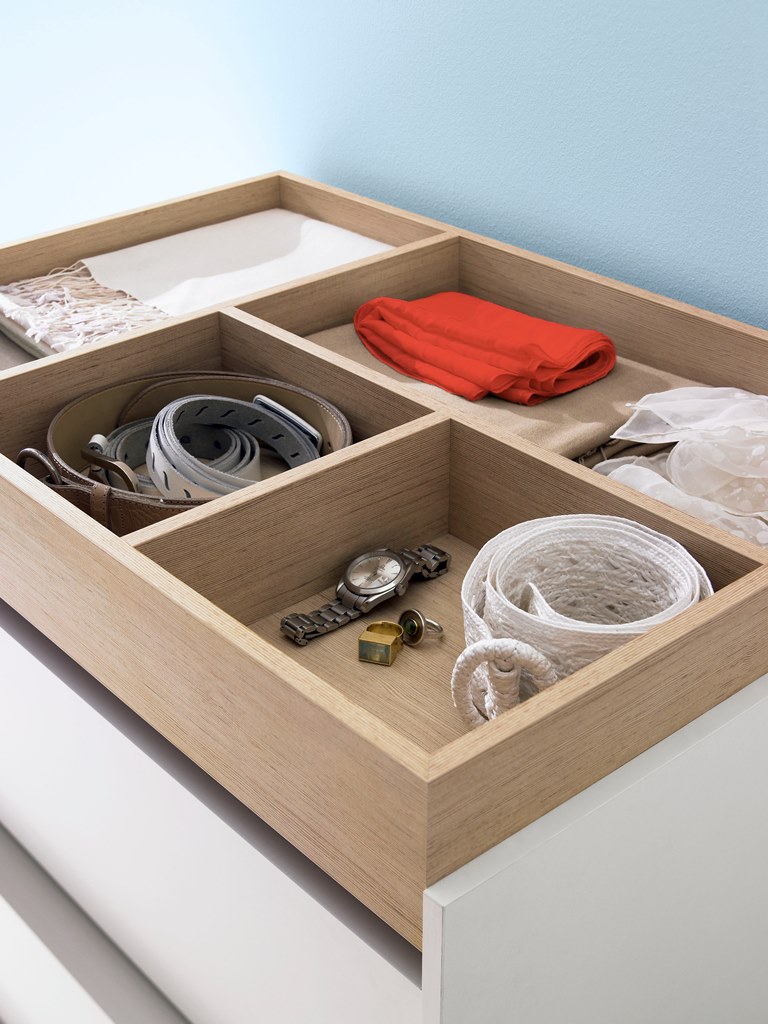
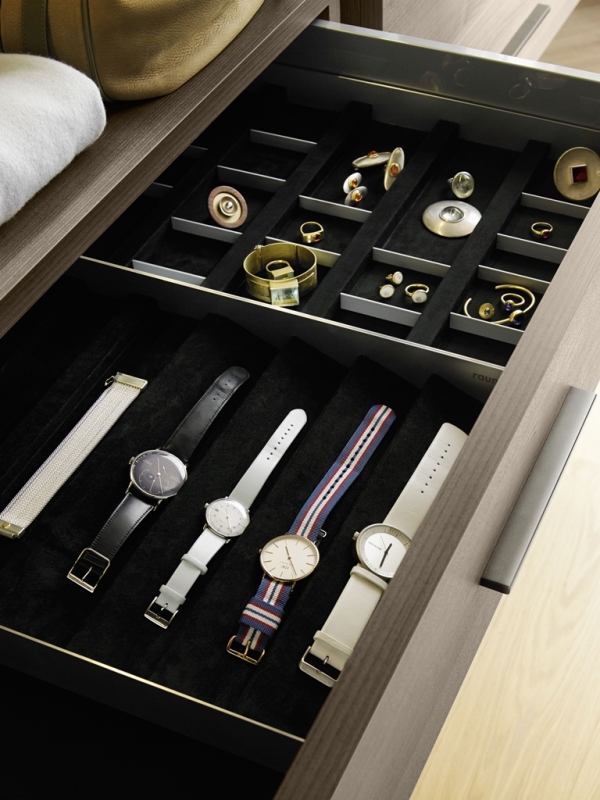
Pull-out racks to organise belts, ties and other smaller clothing items.
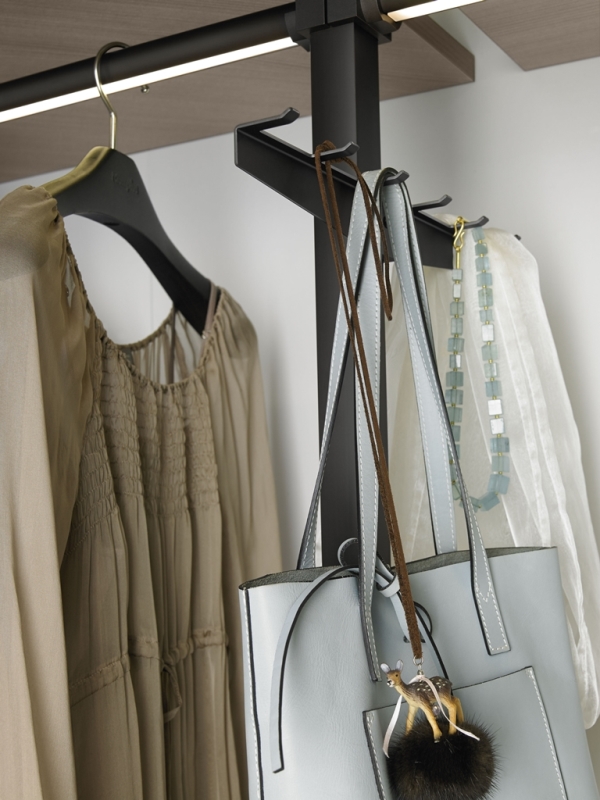
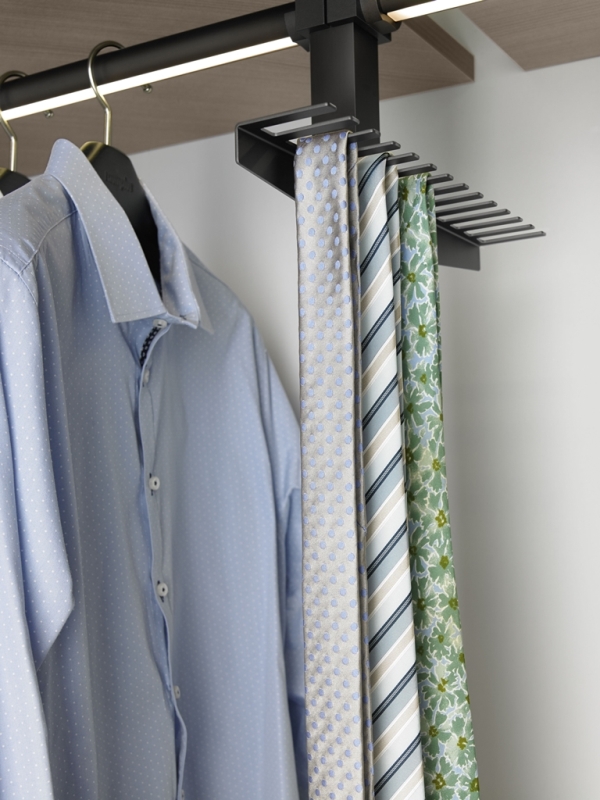
On top of the above proposed wardrobe accessories that improve organisation, an annual “audit” of the wardrobe is still highly recommended. Sartorial needs and wants change with age, career, lifestyle and trends. Thus, a once a year wardrobe reorganisation “project” will help keep clutter at bay. At the same time, airing of clothes during the clean-out process also helps to keep dust mites and mould from growing, and is an opportune time to rediscover clothing items that have been forgotten.

